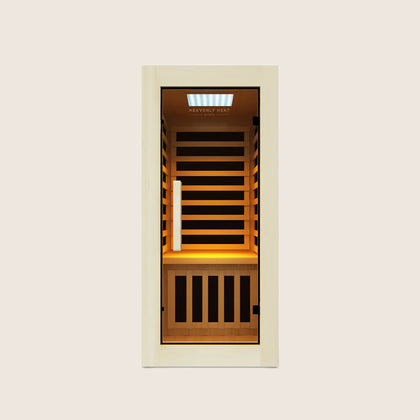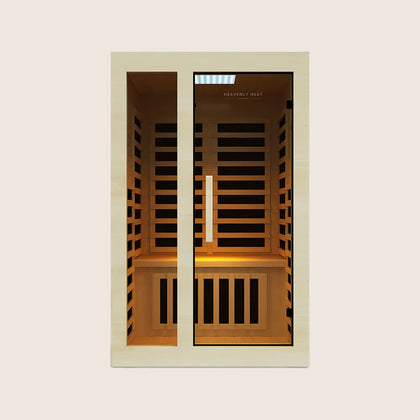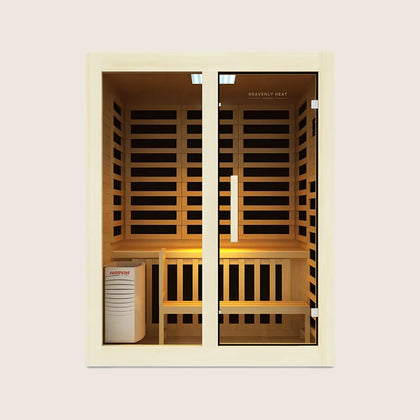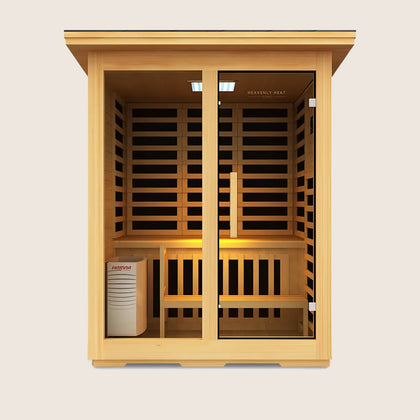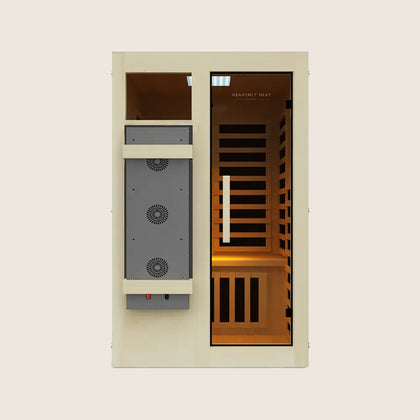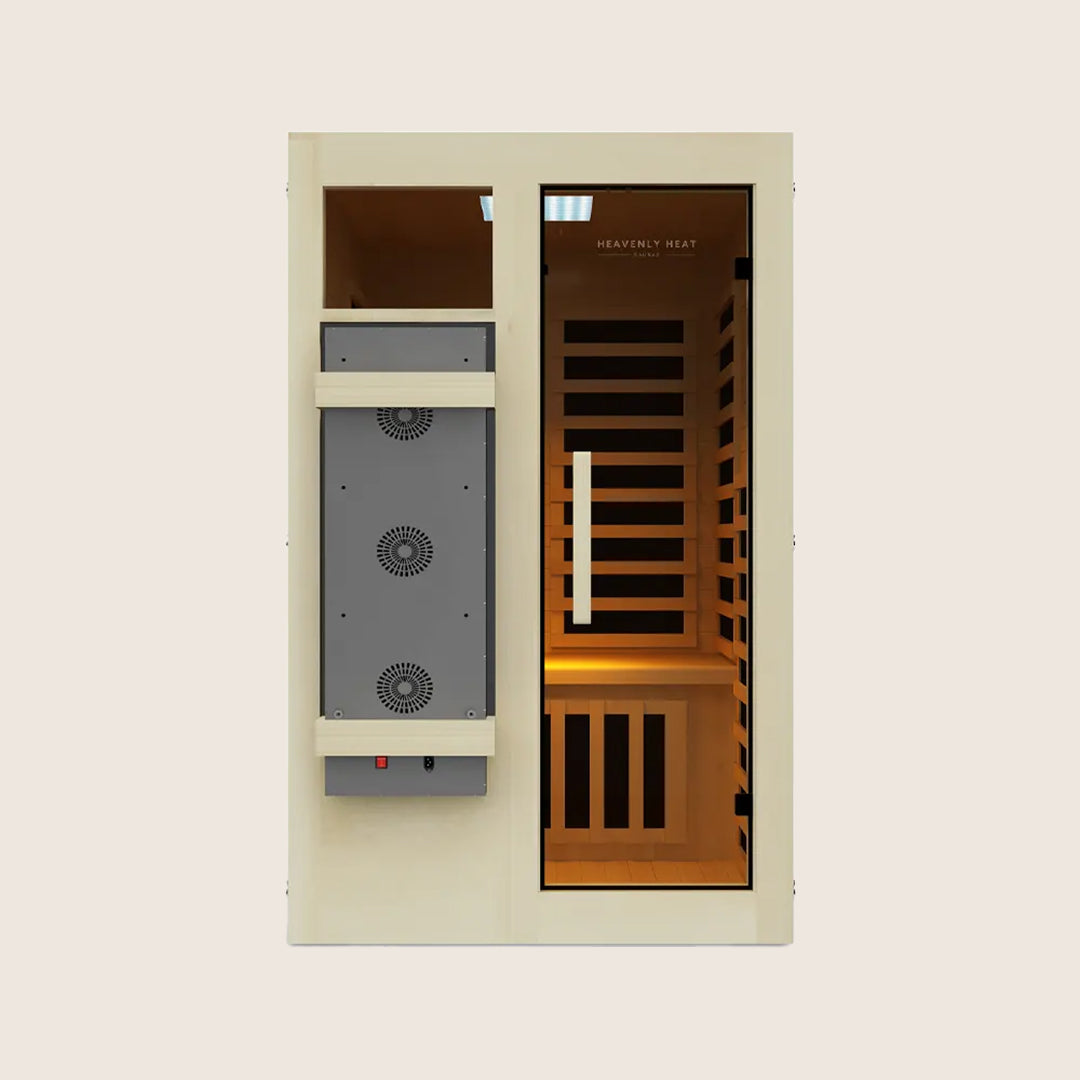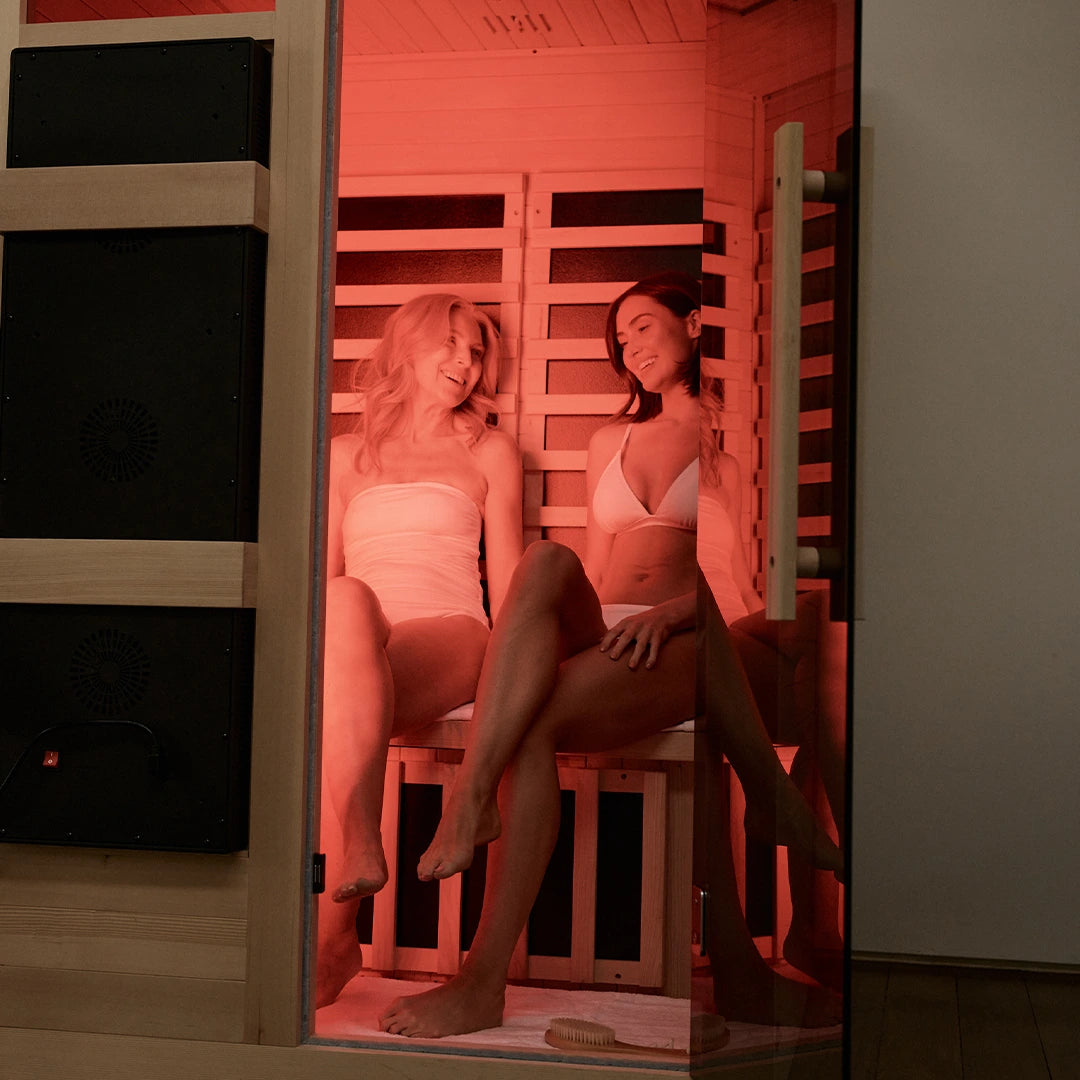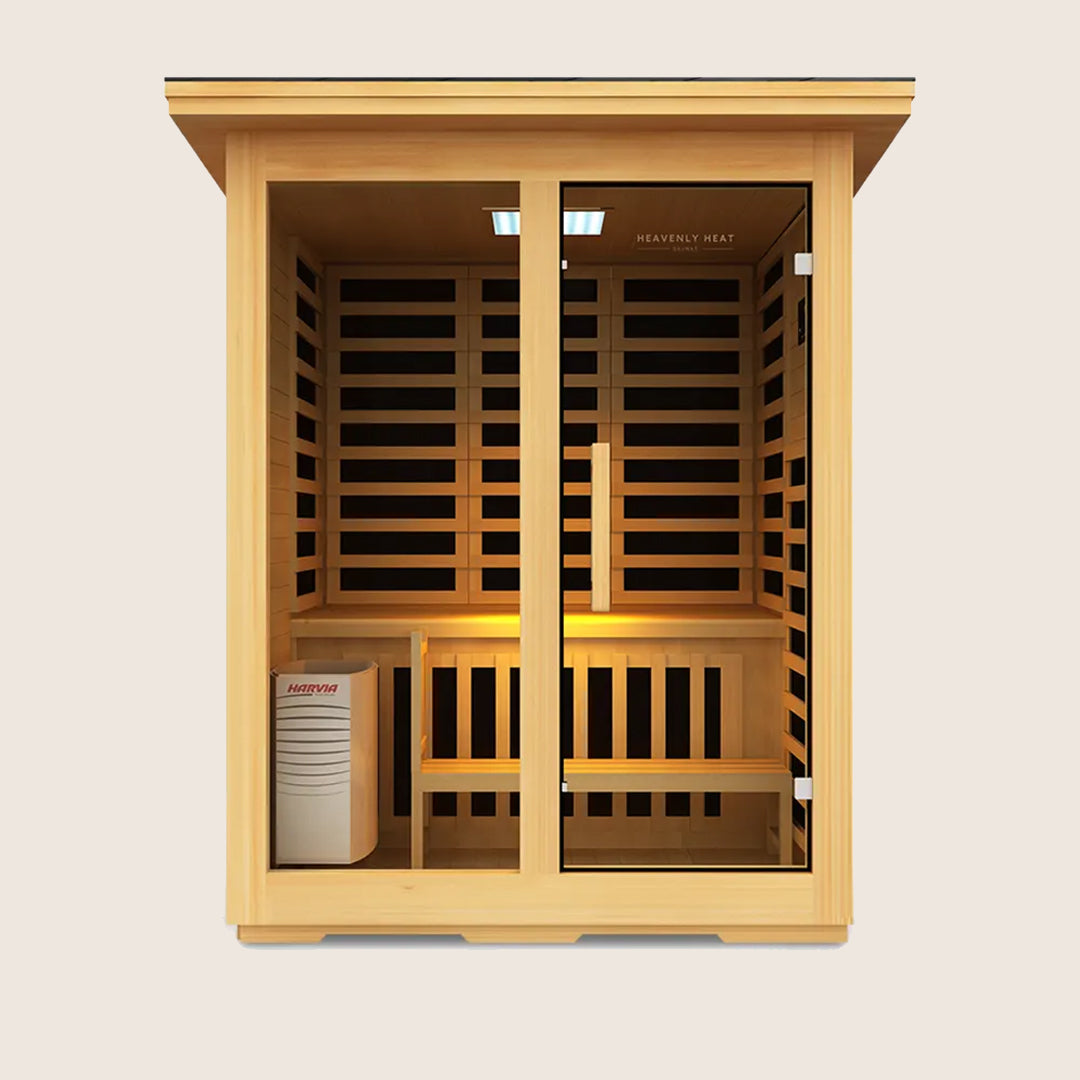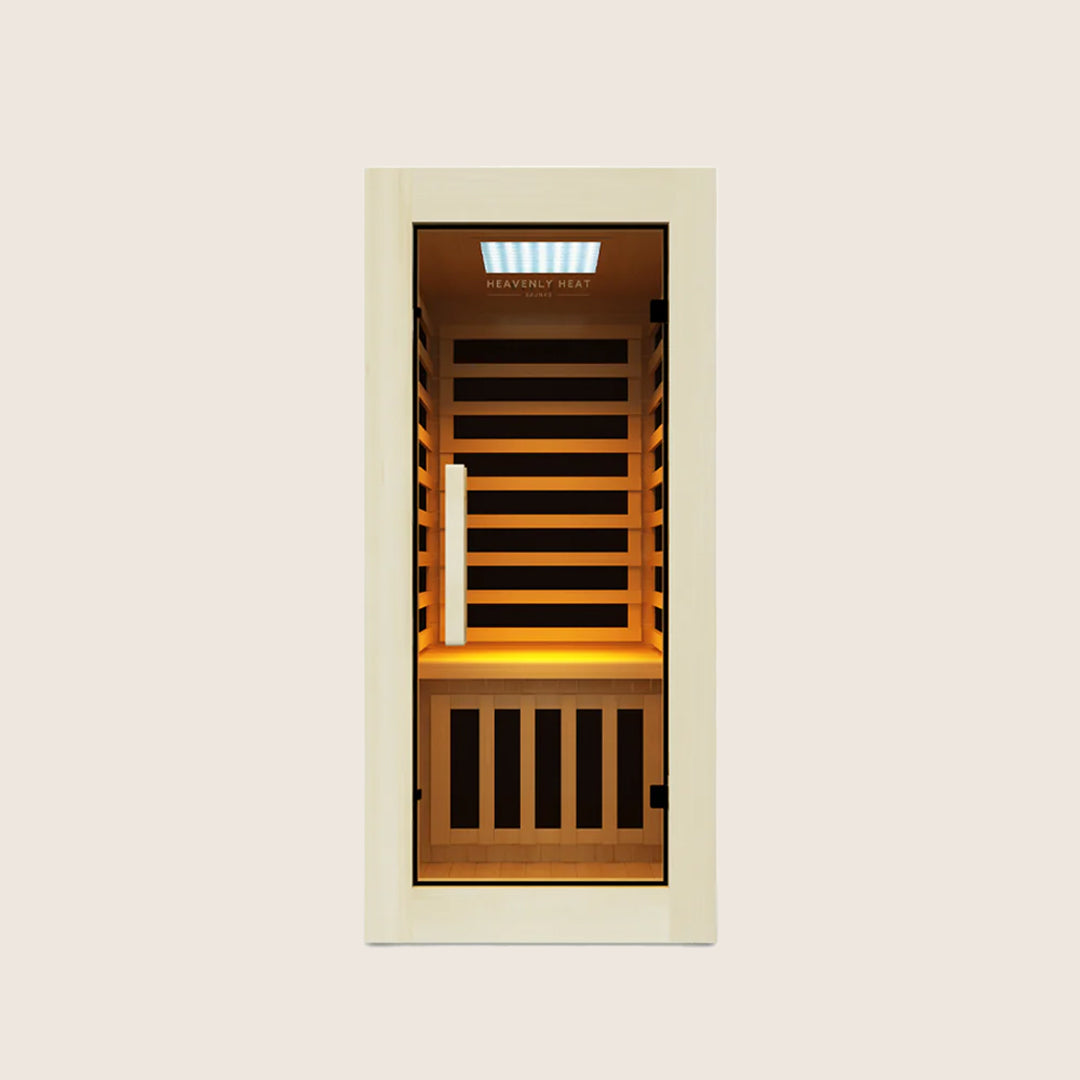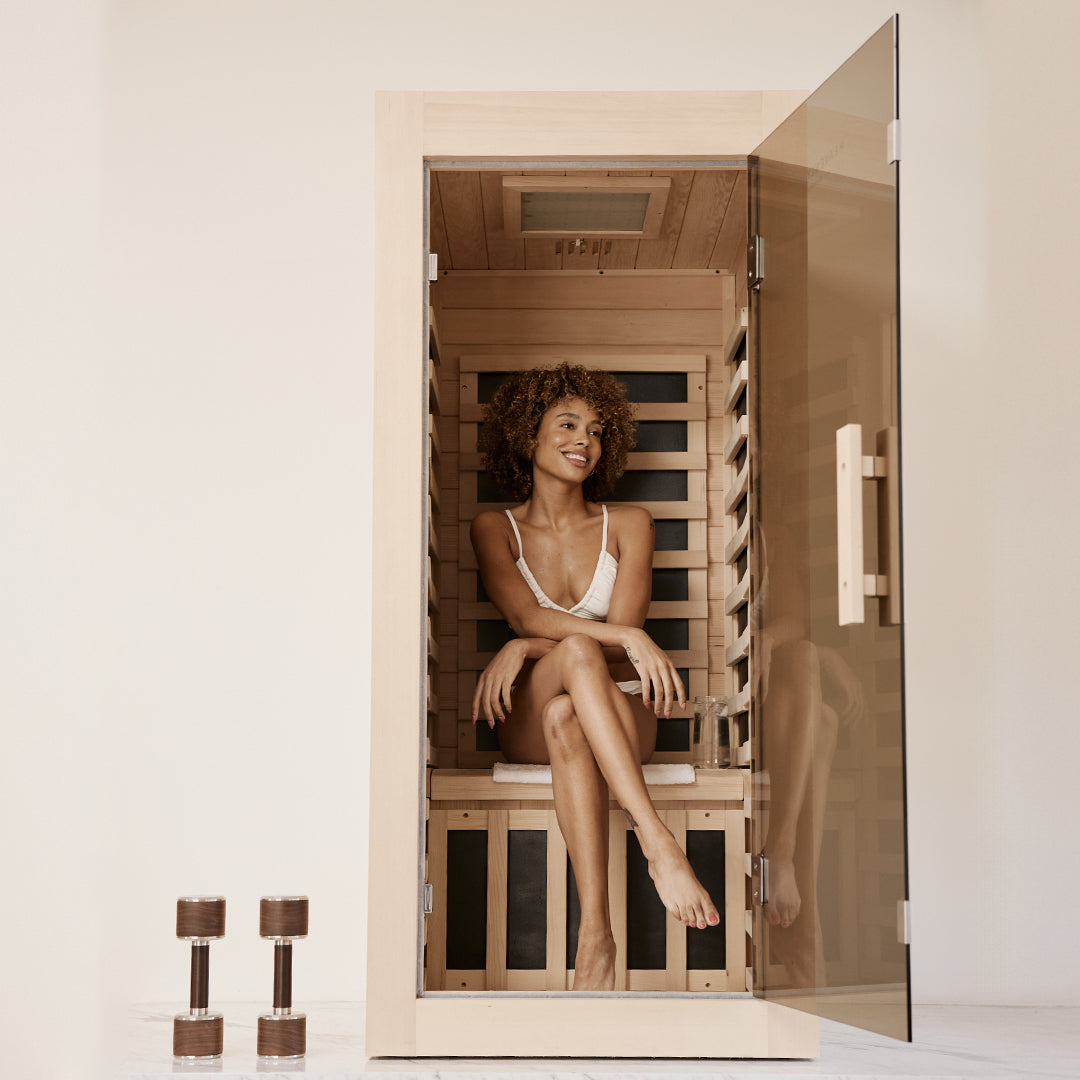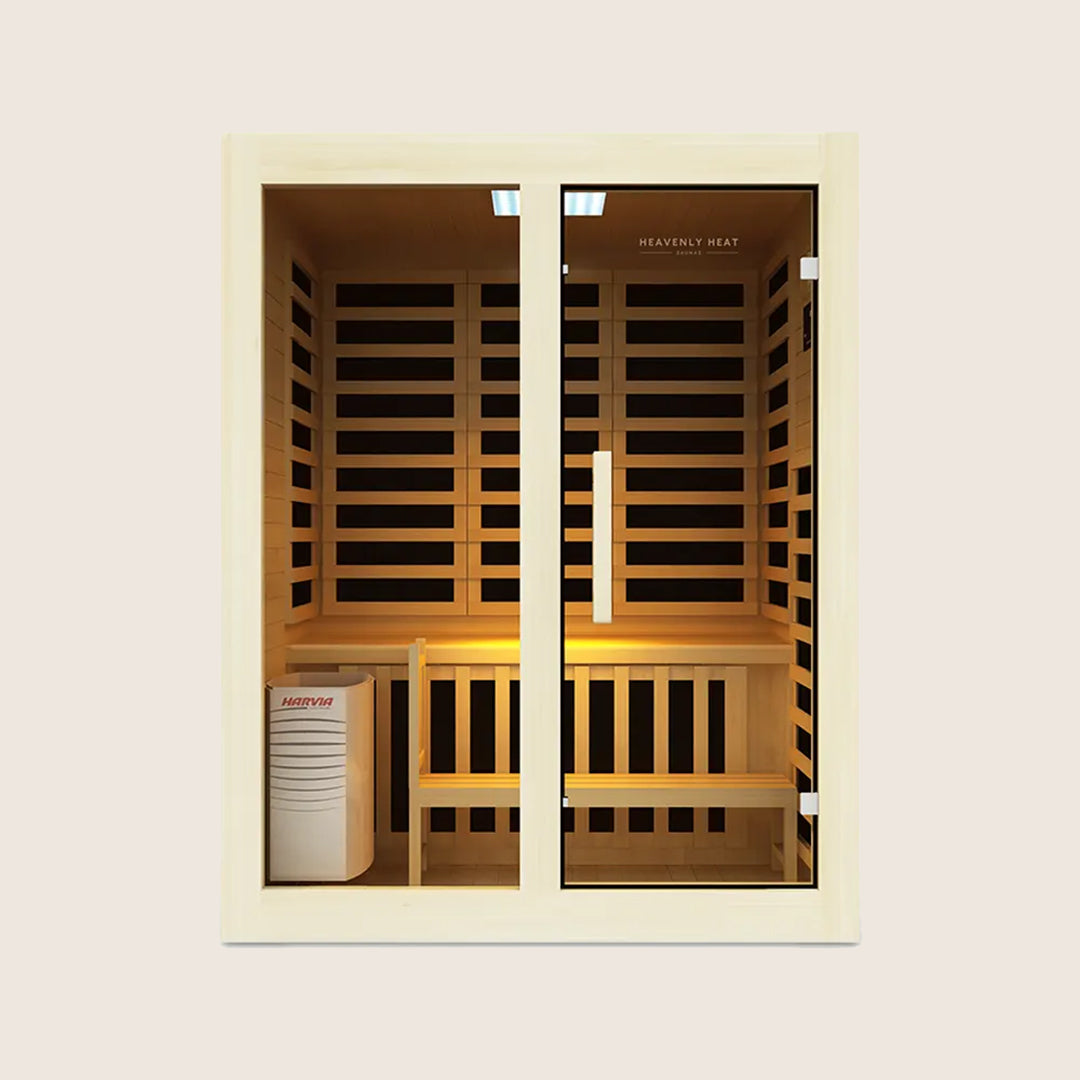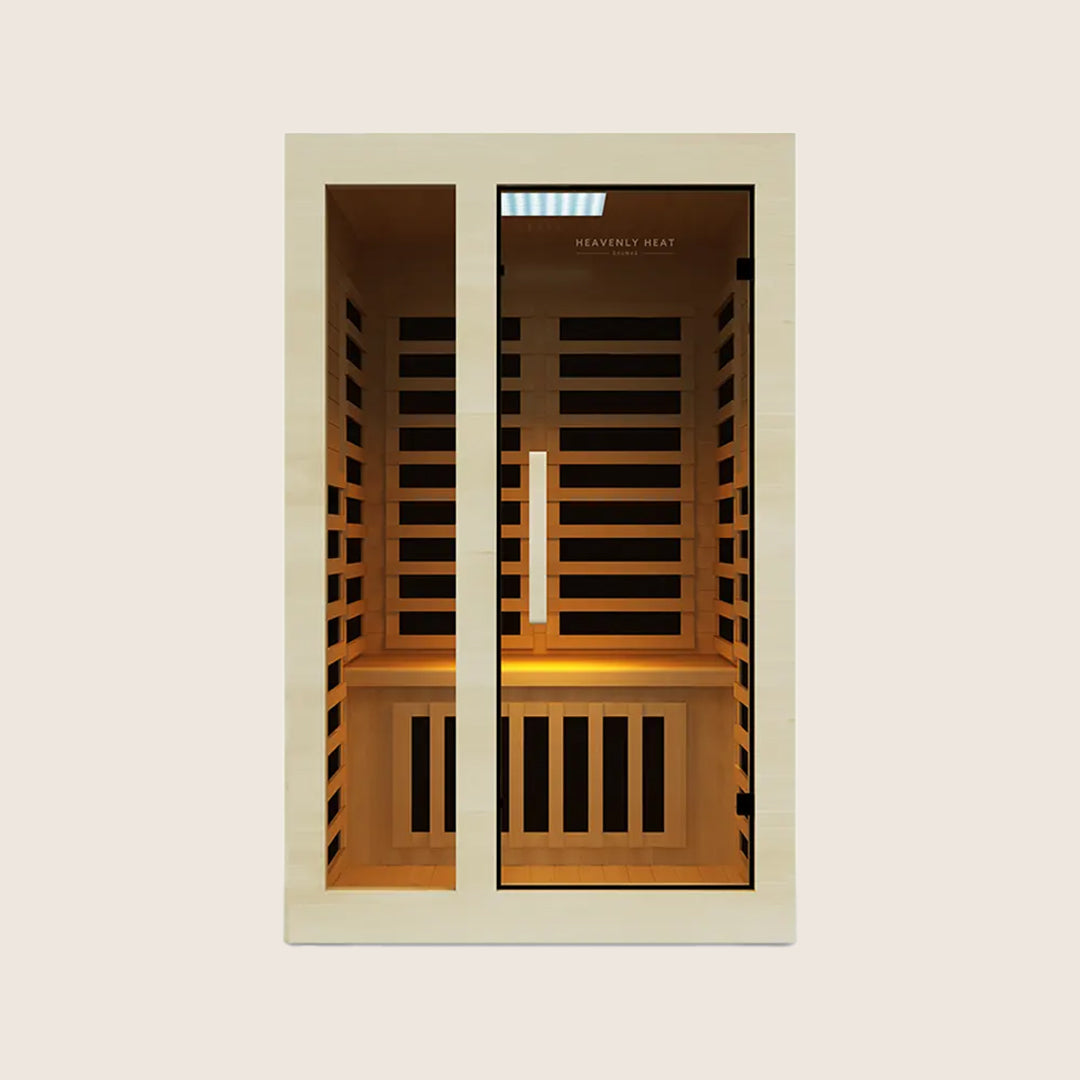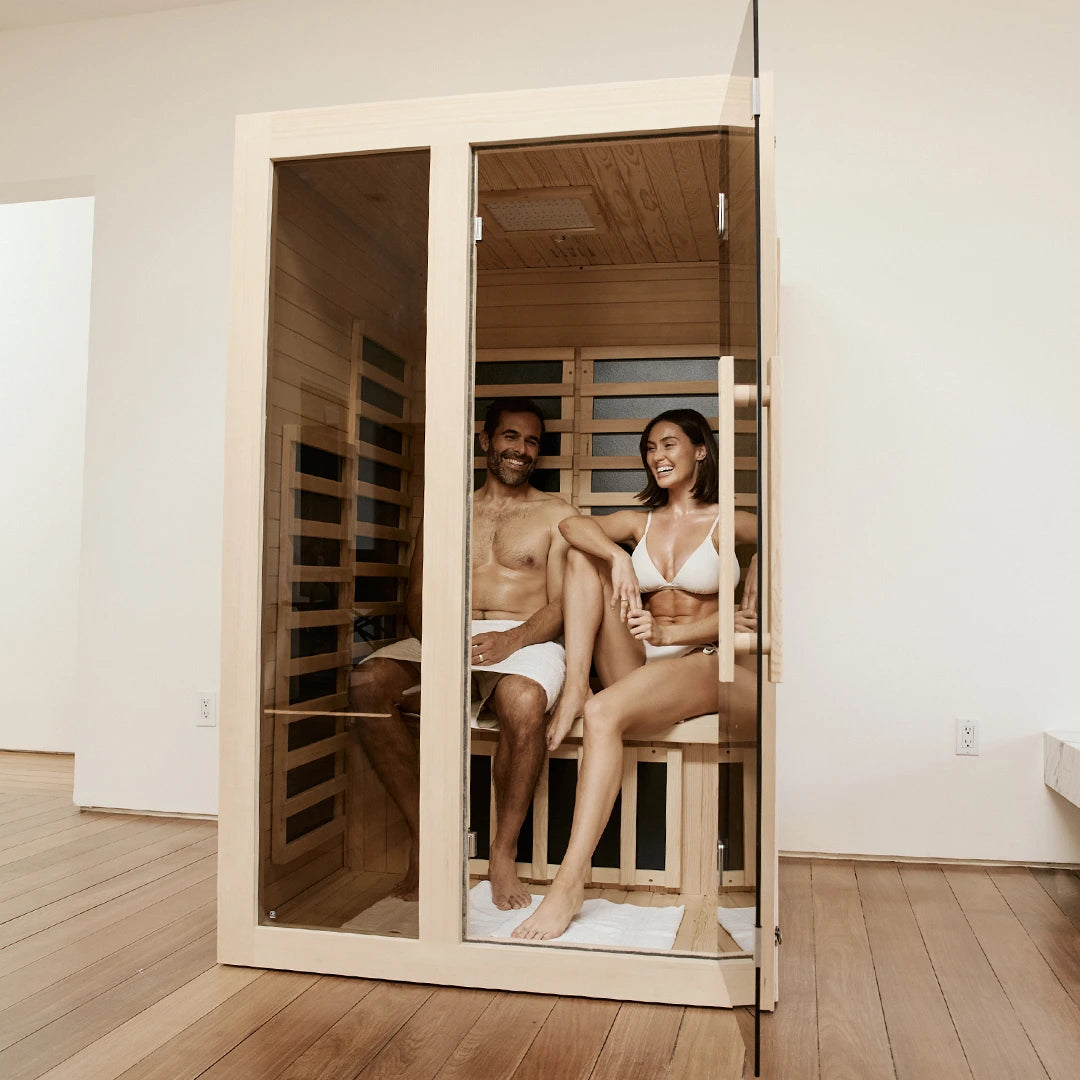The Most Energy-Efficient Infrared Sauna You Can Buy
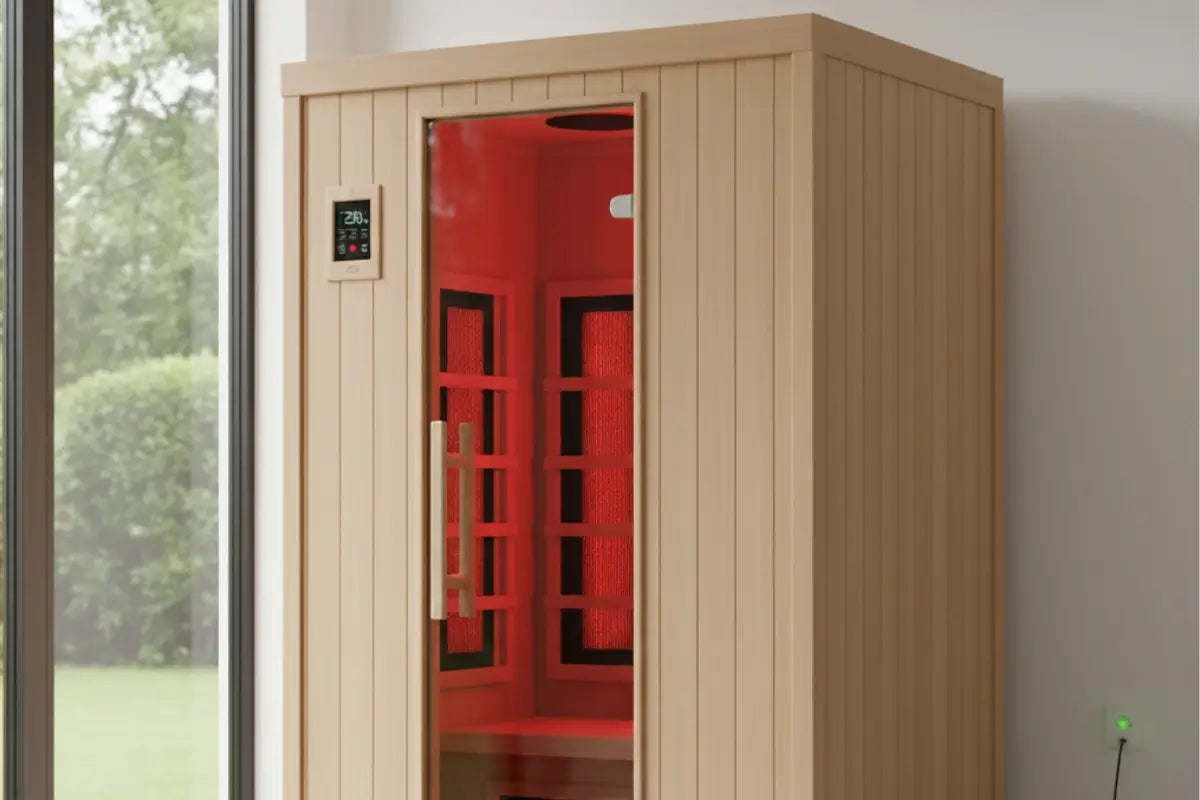
Looking for a sauna that’s relaxing, effective, and won’t spike your energy bills? Infrared saunas offer deep heat, faster warm-ups, and lower electricity use than traditional models.
In this guide, we break down the most energy-efficient options, explain what to look for, and show how the right sauna can save money while boosting your health.
Key Takeaways
Choose the Right Size: Pick a sauna that fits your space and number of users comfortably.
Prioritize Efficient Heating: Low-EMF, full-spectrum heaters save energy and heat evenly.
Monitor Energy Use: Infrared saunas heat faster at lower temperatures, reducing electricity costs.
Safety Matters: Look for certified, low-EMF panels with automatic shut-off and protective surfaces.
Enhance Comfort: Accessories like ergonomic seating, foot heaters, and aromatherapy improve your sauna experience.
The Most Energy-Efficient Infrared Sauna You Can Buy
If you’re looking for a way to enjoy all the benefits of sauna therapy without skyrocketing your energy bills, an infrared sauna is a game-changer.
Unlike traditional saunas that heat the whole room, infrared saunas from Heavenly Heat gently warm your body directly, making them incredibly energy-efficient while still delivering deep, soothing heat.
Their low-EMF/ELF technology and precise heater design ensure fast warm-up and consistent temperatures, so you get the detox, relaxation, and circulation benefits without wasting electricity.
As noted by healthline, infrared saunas are a smart, low-impact way to boost wellness at home.
What to Look For When Buying an Infrared Sauna
Size and Capacity
When buying an infrared sauna, size and capacity are key factors to consider. Start by measuring the space where your sauna will go, use painter’s tape to outline the area and a tape measure to check width, depth, and height.
Subtract about 12–18 inches from each dimension to allow for proper ventilation and safe clearance.
Infrared saunas are more compact than traditional steam saunas because their wall-mounted panels take up less space than bulky heaters, making them ideal for smaller rooms.
Standard sizes include one-person saunas at 36" x 36", two-person at 40" x 48", three-person at 44" x 64", and four-person at 56" x 72", with slightly larger models available.
Infrared units typically require 9–25 square feet depending on capacity, while traditional saunas need more room.
For comfort, plan at least 3 square feet per person. Many buyers opt for larger saunas to accommodate family or friends, balancing space, social use, and personal relaxation in one cozy, health-boosting retreat.

Heating Technology
Infrared saunas use near, mid, and far-infrared heat at different depths: near for skin, mid for muscles, and far for deep tissues.
Full-spectrum heaters combine all three but cost more. Ceramic heaters heat up quickly; carbon heaters spread heat more evenly.
The best models use low-EMF carbon panels. The top choice for most buyers is a low-EMF, full-spectrum system with both ceramic and carbon heating.
Energy Efficiency
When choosing an infrared sauna, energy efficiency is a major factor to consider. Compared to traditional saunas, infrared models use up to 75% less electricity, consuming only 1–3 kWh per hour versus 6–9 kWh for conventional saunas.
This translates to an average operating cost of just $0.26–0.80 per session, making regular home use much more affordable.
High-quality insulation and premium materials also play a key role in maintaining efficiency. Proper insulation traps heat, reducing energy waste and keeping temperatures stable, while advanced features like TheraMitters™ and StableHeat™ technology ensure optimal infrared output with minimal electricity use.
Certifications such as ETL and CE further confirm a sauna’s efficiency and safety. Over time, choosing an Essential Oil-efficient infrared sauna can result in significant savings, using only 1.5–2.5 kW heaters instead of the 6 kW typical of traditional models.
This means you can enjoy the wellness benefits of a sauna while keeping energy costs low and maintaining a sustainable, comfortable experience.
Safety Features
A safe sauna should have certifications like ETL or CE to confirm testing standards. Choose models with low-EMF panels and heater surfaces designed to prevent burns.
Look for automatic shut-off timers, overheating protection, and tempered safety glass for doors and windows to withstand heat. These features ensure safe, reliable use.

Material Quality
When choosing an infrared sauna, the quality of the wood is key for both durability and safety.
Western Red Cedar and Canadian Hemlock are among the best options, cedar naturally resists moisture, mold, and insects while emitting a pleasant aroma, whereas hemlock is stable, low-maintenance, and ideal for those sensitive to scents.
Other choices like basswood and aspen are hypoallergenic and cooler to the touch but less durable.
Thicker wood panels also improve heat retention, create a more even, comfortable warmth, and add long-term stability by reducing warping over time.
It’s equally important to look for eco-friendly and non-toxic certifications, such as FSC-certified wood or low-VOC finishes, which ensure healthier air quality and environmental responsibility.
Avoid plywood, particle board, or other engineered woods, as high heat can release harmful chemicals like formaldehyde, which can irritate the lungs, skin, and even pose long-term health risks.
Choosing solid, untreated wood from reputable manufacturers ensures your sauna is safe, comfortable, and built to last.
Additional Features and Accessories
Extra sauna features can improve comfort and relaxation. Backrests or ergonomic seating support longer sessions, while foot heaters add warmth.
Chromotherapy lights provide mood-enhancing colors, and aromatherapy systems let you use essential oils.
Many models also include Bluetooth or speakers for music or guided meditations. These accessories make sauna use more comfortable, enjoyable, and consistent.
FAQs
What makes an infrared sauna energy efficient?
Infrared saunas are energy-efficient because they heat the body directly with infrared light instead of the air. Operating at lower temperatures (120–140°F), they warm up faster, use less electricity, and high-quality insulation minimizes heat loss, reducing overall energy consumption compared to traditional saunas.
How much electricity does an infrared sauna typically use?
Infrared saunas are surprisingly energy-efficient compared to traditional saunas. A typical infrared sauna uses around 1 to 3 kilowatts (kW) per hour, similar to running a blow dryer or space heater, while conventional saunas can draw 6 to 9 kW, like an oven on high. On average, a one-hour infrared session consumes just 1–3 kilowatt-hours (kWh), making it much cheaper to run. If you use your sauna three times a week, your monthly electricity cost would be around $10, compared with $20–$30 for traditional steam saunas. This efficiency comes from how infrared saunas heat: instead of warming the air, infrared panels directly warm your body, reducing heat loss and lowering energy use. They also operate at lower temperatures (110–150°F) and warm up quickly, using less power before your session even starts. Multiple studies and industry reports confirm infrared saunas are up to 75% more energy-efficient than conventional models, making them a cost-effective and eco-friendly way to enjoy regular sauna therapy.
How do insulation, ventilation, and construction materials affect energy efficiency?
Energy efficiency in buildings is strongly influenced by insulation, ventilation, and the choice of construction materials. Studies show that 50–60% of a building’s heat loss occurs through the walls, windows, roof, and other parts of the building envelope, with walls and windows alone accounting for about 35% and ceilings or attics up to 25%, often worsened by air leaks and gaps. Research highlighted in the Journal of Buildings reveals that homes built with insulated concrete forms (ICFs) can use up to 41% less electricity and 5% less natural gas than traditional wood-framed houses, while providing more stable indoor temperatures and annual energy savings of around USD 270. Adding high-performance windows and roofing can further cut heating and cooling bills by 10–25%. Government and industry reports, including ENERGY STAR, emphasize that sustainable construction materials not only reduce energy and water use but also lower maintenance costs and increase property value, making energy-efficient building practices both environmentally and financially smart.
How long does it take for an infrared sauna to heat up, and how does that impact efficiency?
An infrared sauna typically heats in 10–20 minutes, faster and more energy-efficient than traditional saunas. Efficiency depends on heater power, insulation, size, and design. Clean, well-maintained heaters perform best, while smart controls enhance convenience by preheating the sauna for optimal comfort and energy savings.
What is the optimal temperature for energy savings in an infrared sauna?
The optimal temperature for energy savings in an infrared sauna is 120°F to 140°F (49°C to 60°C). This range heats the body directly, not the air, making it more efficient while supporting relaxation, circulation, detoxification, and pain relief without unnecessary energy use or discomfort.
Can timers or smart controls help reduce energy use?
Timers and smart controls reduce energy use by automating lights and appliances, preventing waste, lowering utility bills, and extending appliance life. They also cut standby power, manage high-energy devices, and offer features like remote control, energy monitoring, and sensors for efficient, optimized energy management.
How does the size of an infrared sauna influence energy consumption?
The size of an infrared sauna directly affects energy consumption. Larger saunas require more power to heat greater space and surface area, leading to increased heat loss and workload. While total energy use rises, cost per person can be lower if multiple users share, notes Salus Saunas.


